Badugi
Badugi
Badugi is a four-card variant of draw-game poker.
You are dealt four cards and may discard from zero to four of them on the draw(s) and receive that number of replacement cards. In the Single Draw format, each player only has one opportunity to draw for new cards. In Triple Draw, each player has three opportunities to draw for new cards. Please note: On any draw you may ‘Stand Pat’ (not discard any cards) and keep all five cards.
The object of the game is to make a Badugi - a four-card low hand with four different suits and no pairs. In Badugi, Aces are always low, but having more than one card of the same suit is bad. The best possible starting hand therefore is 4-3-2-1 (with each card a different suit).
Badugi hands are ranked by their highest card, with aces always playing as a low card and straights ignored. A player holding 9-8-4-3 of different suits (a ‘Nine Badugi’) would lose to an opponent holding 8-7-3-2 of different suits (an ‘Eight Badugi’). Likewise, 6-4-2-1 (a ‘Six Badugi’) would lose to 5-4-3-2 (a ‘Five Badugi’). If the top cards in the hand are tied, then the next-highest card is considered, and so on.
If a hand reaches showdown and no player has a four-card Badugi, the player with the best three-card hand wins the pot. If no one has that, the best two-card hand wins the pot. For example, if you hold 6h-4d-3s-2h, you have two hearts, so the highest one is ignored, leaving a 4-3-2-x. That hand is known as a ‘Three Card Four’, and would lose to the worst four-card Badugi, but it would beat 7h-5d-4d-3s (the highest diamond is ignored, making a ‘Three Card Seven’, 7-4-3-x). All three-card hands, in turn, beat all two-card hands. For example, 4d-4s-2d-2c is a ‘Two-Card Four’, 4-2-X-X, because there are two pairs). It’s even possible to have a ‘One Card’ hand; for example, Qd-Jd-8d-5d has four cards of the same suit, so three of them are ignored, leaving just the 5d, a ‘One-Card Five’.
To help understand the ranking of hands, the following Badugi hands (not a complete list) are ranked from least powerful (#1, which will rarely win the pot) to most powerful (#18, the nuts):
One-card hands:
1) Q J 8 5
[5-x-x-x] (three of the diamonds are ignored)
2) K J 9 4
[4-x-x-x] (three of the spades are ignored)
3) A A A A
[A-x-x-x] (three of the Aces are ignored)
Two-card hands:
4) Q J J J
[Q-J-x-x] (the Js and another Jack are ignored)
5) T T 9 9
[T-9-x-x] (one Ten and the Nine of the other suit are ignored)
6) 9 8 7 6
[7-6-x-x] (the two highest spades are ignored)
7) 3 2 A A
[2-A-x-x] (the 3c and one Ace are ignored)
Three-card hands:
8) K K 2 A
[K-2-A-x] (the Kd is ignored)
9) Q Q 2 A
[Q-2-A-x] (a Queen is ignored)
10) Q J T 9
[J-T-9-x] (the Qs is ignored)
11) Q J T 6
[J-T-6-x] (the Qs is ignored)
12) K J 8 6
[J-T-6-x] (the Qs is ignored)
13) 4 3 2 A
[4-2-A-x] (the 3c is ignored)
14) 3 3 2 A
[3-2-A-x] (a Three is ignored)
Badugis:
15) K Q J T
[K-Q-J-T] (the worst Badugi)
16) 8 7 2 A
17) 8 5 4 2
18) 4 3 2 A
[4-3-2-A] (the best Badugi)
How it’s Dealt:
Draw games are played using blinds, with the player sitting to the left of the dealer button posting a small blind, and the player to their left posting the big blind. 2-7 is also sometimes played with an ante, to be posted by either just the big blind or all players.
Each player is dealt five cards face down followed immediately by a round of betting, where players have the option to either call the big blind, raise, or fold. Players still remaining in the hand after the first round of betting is complete now have the opportunity to draw. In order, clockwise from the button, each of the remaining players will select which (if any) card(s) they want replaced by pushing them forward, faced down. Player may discard all five cards. Player may ‘Stand Pat’, meaning choose to not discard any cards. Once a player has announced how many cards they want to exchange, there is no changing that decision.
After the first draw, there is another round of betting, beginning with the first active player to the left of the button until action is complete. If you are playing Single Draw, that’s it, time for showdown!
If you are playing Triple Draw, there will be two more draws with a round of betting following each, for a total of three draws and four rounds of betting. If more than one player is still left after the final round of betting, it’s time for showdown where the player holding the best 2-7 hand wins the pot.
Reshuffling:
In draw games, it is possible for more cards to be needed than are remaining in the deck. In this case, the cards are reshuffled, and play continues using the shuffled cards.
Determining the Winner:
The player with the best (lowest) five-card 2-7 hand wins the pot.
If two or more hands have the same value, the pot is equally split among them, odd chip awarded to player(s) in the worst position.

